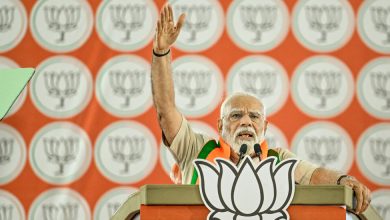The Fed’s Newfound Aggressiveness Is Concerning

When it comes to fighting inflation, Esther George is accustomed to being a hawk among doves. Now, in a strange turnabout, she is a dove among hawks. George, the president of the Federal Reserve Bank of Kansas City, was the only member of the Federal Open Market Committee to vote on Wednesday against the Fed’s increase of three-quarters of a percentage point in the key short-term lending rate it controls. She favored a half-percentage-point increase.
On Friday George released a statement explaining her vote against the increase — the biggest Fed rate hike since 1994. She agreed with the goal of fighting inflation, but wrote: “However, the speed with which we adjust the policy rate is important. Policy changes affect the economy with a lag, and significant and abrupt changes can be unsettling to households and small businesses as they make necessary adjustments.” She added that the rapid increases could put stress on community banks.
I share her concern about the Fed’s newfound aggressiveness. Raising interest rates sharply to cool demand for goods and services could very well cause a recession. If the Fed were to stop at this rate increase, the risk would be small, but that’s not the plan: According to projections released on Wednesday, the median expectation among members of the Federal Open Market Committee is for the top end of the target range for the federal funds rate to reach nearly 3.5 percent by the end of this year, up from 1.75 percent now and 0.25 percent when the year started.
Investors are clearly worried. For most of the period since the global financial crisis of 2007 to 2009, stocks tended to rise, on average, when interest rates went up. Why? One theory is that inflation was a distant concern and higher rates tended to reflect optimism about economic growth.
Lately, though, stocks have tended to fall when interest rates have gone up. The chart below shows that. To be clear, this chart compares stocks to bonds, not to interest rates. But there’s a tight connection: Bond prices fall when interest rates go up (and, conversely, rise when interest rates fall). So the recent increase in the correlation between stock returns and bond returns means that when bond prices fall (because interest rates are rising), stock prices tend to fall as well. The correlation of returns became strongly positive in 2021, fell back and is now again in positive territory, on average, over the past 65 days, according to data supplied to me by the London-based organization Absolute Strategy Research.
If stocks continue to fall when interest rates rise (which is not clear yet), it will amplify the impact of the Fed’s rate hikes. The reason this matters is that the stock market isn’t just a barometer of the economy. It’s also part of the economy. When stocks fall, people who own shares become poorer and rein in their spending. Businesses curtail investments. That slows economic growth and increases unemployment.
There are other reasons to think the U.S. economy and inflation are beginning to cool off, even without extreme measures by the Fed. The big increase in the price of gasoline, which has caught everyone’s attention, is taking money from consumers that they could otherwise spend on other things. It’s significant that retail sales fell in May from April, even though they had been expected to rise. The dollar is strong, which will restrain import prices.
The housing market, whose health is pivotal to the economy, is under stress. The average rate on 30-year fixed-rate mortgages rose to 5.8 percent this week, from 3.1 percent at the beginning of the year, according to Freddie Mac. At the new pace of sales, the number of new homes for sale jumped in April to a nine-month supply, from about six months’ worth in February, according to the Census Bureau. That’s an enormous jump. “The housing market never likes significant rises in mortgage rates in short time periods, and it’s not liking this one, either,” Douglas Duncan, the chief economist at Fannie Mae, told me.
“We’re not trying to induce a recession now,” the Federal Reserve chair, Jerome Powell, said at a news conference after the meeting of the Federal Open Market Committee on Wednesday. Of course they aren’t. But that just might be the result.
The readers write
Concerning your Wednesday newsletter about the LIV Golf controversy, there is an argument that if golfers on the PGA Tour can take themselves and their rivalries to a rival tour, this permits the rival tour to free ride on the PGA promotion and diminishes the PGA’s incentive to promote its own competitions. I am not saying I believe this argument to be valid, but I suspect something like this will be used to try to justify the PGA’s restraint if it’s challenged as unreasonable under the Sherman Antitrust Act.
Peter Bronsteen
Princeton, N.J.
Quote of the day
“To say that markets can be represented by supply and demand ‘curves’ is no less a metaphor than to say that the west wind is ‘the breath of autumn’s being.’”
— Deirdre N. McCloskey, “The Rhetoric of Economics,” second edition (1998)
Have feedback? Send a note to [email protected].



